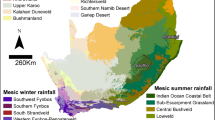Abstract.
The species diversity data of seven globally important wetlands (Canadian peatlands, Florida Everglades, Pantanal, Okavango Delta, Sundarban, Tonle Sap, and Kakadu National Park) were compared. The available data for most groups of lower plants and animals are insufficient for a comparative analysis. Data on vertebrates and higher plants are more complete and show high species diversity. The large habitat diversity allows the coexistence of amphibious species with many immigrants from connected deepwater and terrestrial habitats. Several of these immigrant species find an important permanent refuge in the wetlands; some use the wetlands as periodic habitats. All wetlands are important habitats for long-distance migratory bird species. The species composition reflects the biogeography of the respective regions, e.g. the high diversity of large ungulates characteristic for Africa is also found in the Okavango Delta in Botswana, and the high fish species diversity typical for South America is also reflected in the Pantanal in Brazil. The number of endemic species in most wetlands is low, except in the Everglades. The low numbers are explained to some extent by the dramatically changing paleo-climatic conditions that increased extinction rates, but also by the connection with large river systems that act as migratory and transport routes for species from large catchment areas and hinder the genetic isolation of wetland populations. The high number of endemic species in the Everglades is explained in part by its isolation on a peninsula. The relatively low nutrient status of most wetlands does not negatively affect species diversity and often leads to high animal densities. Large populations of endangered or rare species in all wetlands contribute to the great value of these areas for biodiversity protection. All wetlands are subjected to an increasing degree to human pressure through, e.g. water abstraction, changes in the natural flood regime, land reclamation, pollution, over-utilization of natural resources, and poaching. High habitat diversity and a pronounced natural disturbance regime make some of the wetlands vulnerable to invasion by exotic species, as shown for the Everglades. All studied wetlands are at least in part protected by national and international conventions. This provides perspectives for long-term protection only to a limited extent because of major environmental changes in their surroundings. Further strong efforts are required to match protection and sustainable use of the wetlands proper with management activities in their catchments.
Similar content being viewed by others
Author information
Authors and Affiliations
Corresponding author
Additional information
Received: 21 February 2006; revised manuscript accepted: 28 March 2006
Rights and permissions
About this article
Cite this article
Junk, W.J., Brown, M., Campbell, I.C. et al. The comparative biodiversity of seven globally important wetlands: a synthesis. Aquat. Sci. 68, 400–414 (2006). https://doi.org/10.1007/s00027-006-0856-z
Published:
Issue Date:
DOI: https://doi.org/10.1007/s00027-006-0856-z




